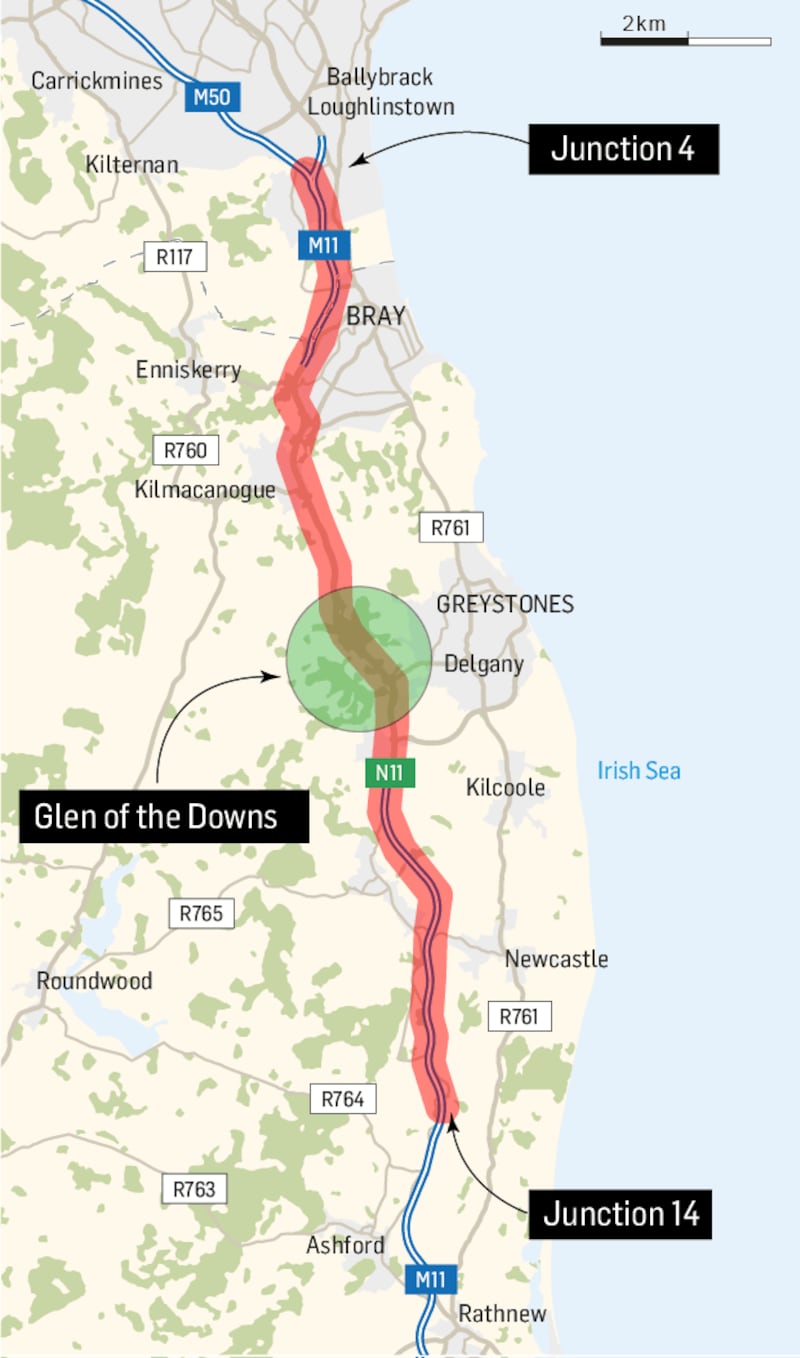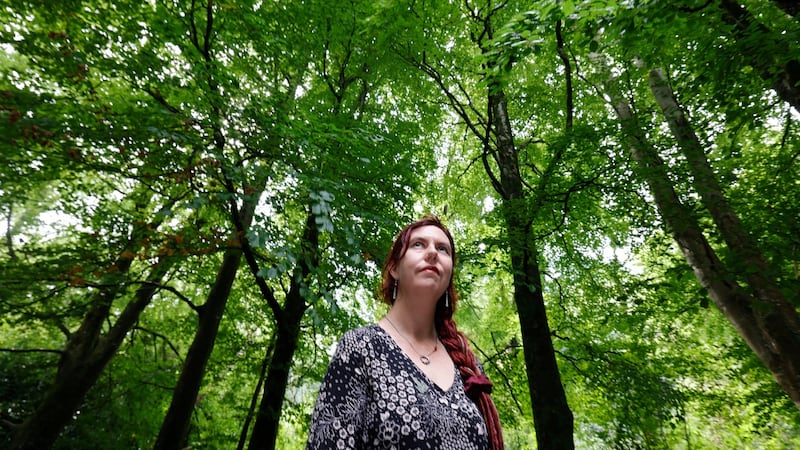Public consultation is under way on a major proposed overhaul of Co Wicklow’s principal traffic artery with officials expected to emphasise the multimillion euro project is not about simply putting more cars on the road.
A 22km section of the N11/M11, running from Dublin's M50 south to Coyne's Cross, near Ashford in Co Wicklow, has long been choked by rush-hour traffic, and this is re-emerging in the wake of Covid lockdowns.
The project will not widen the stretch running through the picturesque Glen of the Downs forest. In the late 1990s an expansion of the N11 sparked protracted opposition, with activist camps established among the oak canopies.

Planners are expected to insist that changes will centre on local alternative traffic routes and public transport, rather than a blunt expansion of commuter traffic or measures to increase speed.
“It’s about how you can sweat the asset,” a transport source said, in reference to extending and adapting existing infrastructure.
Details of the proposed scheme are due to be presented at the monthly Wicklow County Council meeting on Monday night, while ongoing public consultation this month will help shape the detail of the overall works.
It is unlikely to avoid opposition, however.
"There is still a lot of run in this in terms of going to planning and even if we go to planning, do we fund it?" said Wicklow Green Party TD Steven Matthews, who believes the county's transport focus should lie squarely with a southern expansion of Dublin's electric Dart line as well as a network of express buses.
Mr Matthews was involved in the early project as a county councillor.
As it stands, the preferred option is not a major expansion of motorway but a series of upgrades to improve safety and offer congestion “solutions”, including parallel roads that would keep local traffic off the main artery for short-hop journeys.
Some lane-widening seems unavoidable, however, both to alleviate pressure and facilitate bus lanes, while park and ride facilities are also likely. Significant alterations to existing access points would also be undertaken.
‘More public transport’
There is no timeline as yet, or budget, and much will depend on priorities set out in the forthcoming National Development Plan. The scheme, should it proceed, could also be subject to an oral hearing at An Bord Pleanála.
Now in its third phase of a public consultation, other options have been discarded including a potentially controversial tunnel. Planners hope that public input will be an ongoing factor, even beyond deadlines for formal report submissions later this month.
A local political source, requesting anonymity before Monday’s council presentation, said the consensus was that planners had listened to local concerns as reflected in the ditching of alternative, more contentious, road construction.
“There was uproar, basically, when the thing was first proposed. People were saying we need more public transport, and not widening of the road,” the person said.
“I felt it was a shift [by planners] but I don’t know how quickly people will turn to believe them until they see the proof in the pudding” in terms of service provision. “There is a need for trust building.”
It is a point supported by Wicklow Social Democrats TD Jennifer Whitmore who said there is overwhelming local demand for public transport but no apparent planning for its provision. "It needs to be part of this process," she said.
Wildlife bridges
With growing unease around carbon emission targets and a Green Party Minister for Transport in Eamon Ryan, officials behind the project appear anxious to press its sustainable credentials.
“It’s absolutely not just to put extra lanes into Dublin,” one senior official said. “That would achieve nothing worthwhile; you can’t just keep adding lanes.”
A spokesman for the Minister said he noted that council officials were “investigating the possibility of advance provision of priority bus lanes” on sections of the route, but declined to comment further given planning was at such an early stage.
Whatever the outcome, it will almost certainly require some level of compulsory land purchase. Those concerned for the Glen of the Downs section, however, can breathe easy. Faced with an almost certain public backlash, no widening of that section is being considered.
Yasmin Fortune, a local resident and environmentalist who is passionate about the area's history and wildlife, welcomed the lack of any such intrusion, although she supports the concept of a tunnel that might allow the Glen of the Downs to be entirely "re-greened" and the future of the Three Trout Stream secured.
“What they do need is wildlife bridges [along the N11] because the animals at the minute can’t get from one side of the downs to the other without getting killed,” she said. “I think development is inevitable, it just has to be sensible.”
‘The idea of what progress is has changed so much’
Laura Grealish was 16 when she and her mother delivered a fruit cake to environmental activists who had set up camp in Wicklow's Glen of the Downs in 1997. Two years later she and 12 others, determined to prevent the felling of hundreds of ancient oak trees, would be sent to prison for their refusal to stand down the protest.
“You used to be able to walk up and down the N11 and cross over, there would be quiet moments,” she muses of the old single-lane road near where she grew up. “It was a lot quieter back then.”

In the days before environmental awareness was the norm, the activists occupying the small Co Wicklow forest were either embraced as a novelty or dismissed as idealists.
Ireland’s road network was expanding alongside economic growth. The modest N11 would be stretched into a dual carriageway – 1,700 trees, about 2 per cent of the 145 acre nature reserve, would have to make way.
It became something of a three-year cause célèbre of Irish activism. Ultimately, the road was built but the campaign succeeded in raising awareness of the area. While the Glen of the Downs seems off limits to the forthcoming N11 upgrade, the overall plans bring back memories for those involved in the early camp-in.
“We used to make the argument that in a number of years’ time they will probably want to widen the road again, and just doing that without taking other things into consideration when providing a long-term solution,” said Ms Grealish, who has since returned to live in the area and works in the public service.
“Now the idea of what progress is has changed so much; environmental sustainability is progress.”
There was a price to pay for helping change mindsets. In February 2000 Ms Grealish was imprisoned for a week having refused to obey a High Court injunction.
“There were eight men and five women that day that went to prison,” she remembers. “As an 18-year-old who had never been in any sort of [trouble]...It was bizarre, bewildering.”











